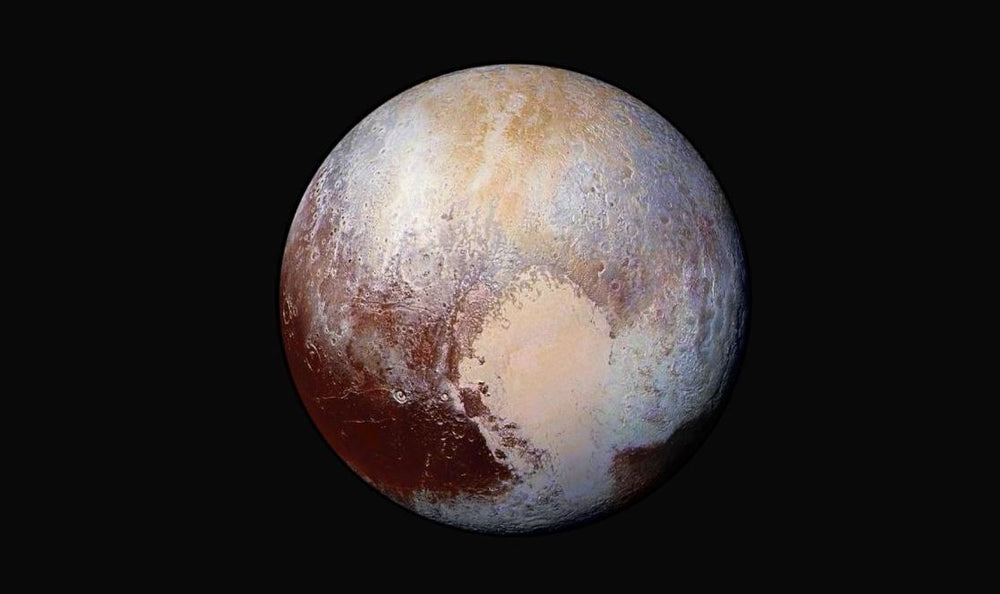Does Pluto have Clouds
Pluto, once considered the ninth planet in our solar system, has long been an enigma for astronomers and space enthusiasts. While its demotion to a dwarf planet sparked debates, the study of Pluto continues to fascinate scientists. One intriguing question that arises is whether Pluto possesses clouds within its atmosphere. In this article, we will answer to the question "does Pluto have clouds" and delve into the current understanding of Pluto's atmospheric composition.
The Atmosphere of Pluto: An Overview
To understand the potential presence of clouds on Pluto, we must first examine its atmosphere. Pluto has a tenuous atmosphere composed mainly of nitrogen, with trace amounts of methane and carbon monoxide. Due to its highly elliptical orbit, Pluto's distance from the Sun varies significantly, causing drastic temperature fluctuations on its surface.
Pluto Clouds
- Observational Evidence: Through telescopic observations and data gathered by NASA's New Horizons mission, scientists have found indications of hazes and atmospheric phenomena on Pluto. These observations have sparked debates about whether these hazes could be considered clouds.
- Haze vs. Clouds: The distinction between haze and clouds is crucial. Haze refers to particles suspended in the atmosphere, whereas clouds are formed by the condensation of gases into liquid or solid particles. Determining the presence of true clouds on Pluto is still an ongoing area of research.
Atmospheric Composition of Pluto
- Atmospheric Layers: Pluto's atmosphere can be divided into distinct layers, including the troposphere, where weather phenomena occur, and the higher-altitude haze and cloud layers. Understanding the composition and behavior of these layers is essential in unraveling the mystery of clouds on Pluto.
- Volatile Ices: The presence of volatile ices, such as methane and nitrogen, in Pluto's atmosphere plays a crucial role in cloud formation. As Pluto moves farther away from the Sun during its elliptical orbit, these ices could potentially condense and form clouds.
New Horizons Mission Findings
- New Horizons Encounter: In July 2015, NASA's New Horizons spacecraft made a historic flyby of Pluto, capturing detailed images and data about its atmosphere. The mission provided valuable insights into Pluto's atmospheric conditions, including the possibility of cloud-like hazes.
- Haze Layers: New Horizons revealed multiple layers of haze in Pluto's atmosphere, extending to altitudes of tens of kilometers. However, scientists are still investigating whether these hazes are similar to clouds found on Earth and other planets.
Future Research on Pluto's Atmosphere
- Modeling and Simulation: Scientists utilize computer models and simulations to recreate Pluto's atmospheric conditions, providing insights into the formation and behavior of clouds. By refining these models, researchers aim to gain a better understanding of the cloud-forming potential on Pluto.
- Ongoing Studies: Astronomical observations, combined with laboratory experiments and theoretical studies, continue to contribute to our knowledge of Pluto's atmosphere. The quest to determine whether Pluto has true clouds remains an active area of research.
Comparisons with Earth's Clouds
- Earth as a Reference: To better understand the potential existence of clouds on Pluto, scientists often draw comparisons with clouds on Earth. While Earth's clouds are primarily composed of water vapor, the different atmospheric conditions and composition on Pluto make a direct comparison challenging.
- Cloud Formation Processes: Exploring the mechanisms behind cloud formation on Earth can offer insights into the possibilities on Pluto. Factors such as temperature, humidity, and atmospheric pressure play vital roles in determining cloud formation, but the unique conditions on Pluto may present alternative processes.
Pluto's Extreme Cold Temperatures
- Cold and Hostile Environment: Pluto's surface temperatures average around minus 375 degrees Fahrenheit (minus 225 degrees Celsius), making it one of the coldest objects in our solar system. Such extreme cold raises questions about the feasibility of cloud formation, as the low temperatures could inhibit the necessary condensation processes.
- Alternative Atmospheric Phenomena: The presence of hazes or other atmospheric phenomena might occur instead of traditional clouds due to Pluto's frigid environment. Understanding these alternative phenomena is crucial in unraveling the mysteries of Pluto's atmospheric composition.
Implications for Pluto's Climate
- Climate Dynamics: Investigating the presence or absence of clouds on Pluto has implications for its overall climate. Clouds can affect temperature distribution, energy balance, and atmospheric circulation patterns, influencing the overall climate system. Studying Pluto's atmospheric dynamics provides insights into the planet's long-term climate evolution.
- Climate Variability: Determining whether Pluto experiences seasonal variations and changes in cloud coverage can provide valuable information about the planet's climate dynamics. Analyzing data from past and future missions will help scientists piece together a comprehensive understanding of Pluto's climate patterns.
Impact on Pluto's Surface Features
- Surface Interaction: Clouds, if present, can impact the surface features of Pluto. They can potentially affect surface temperatures, alter albedo (reflectivity), and contribute to the formation of unique geological formations. Understanding the interplay between atmospheric phenomena and surface processes on Pluto is essential for unraveling the planet's complex geology.
- Influence on Atmospheric Escape: Clouds can also influence the escape of volatile gases from Pluto's atmosphere. By studying the connection between clouds, atmospheric composition, and atmospheric escape processes, scientists can gain insights into the evolution of Pluto's atmosphere over time.
Conclusion
The presence of clouds on Pluto remains a captivating topic, inspiring astronomers and space enthusiasts alike. While observations and data from the New Horizons mission have provided valuable insights into the hazes and atmospheric conditions on Pluto, the nature of these hazes and whether they can be classified as clouds is still under investigation. Continued research and advancements in our understanding of Pluto's atmosphere will shed further light on this intriguing celestial body and its atmospheric phenomena.
Read more about Pluto:
- When was Pluto Discovered?
- Facts about Pluto
- How did Pluto get its name
- Pluto distance from the Sun
- How long does it take Pluto to orbit the sun
- How many moons does Pluto have?
- What is Pluto made of
- Mass of Pluto


